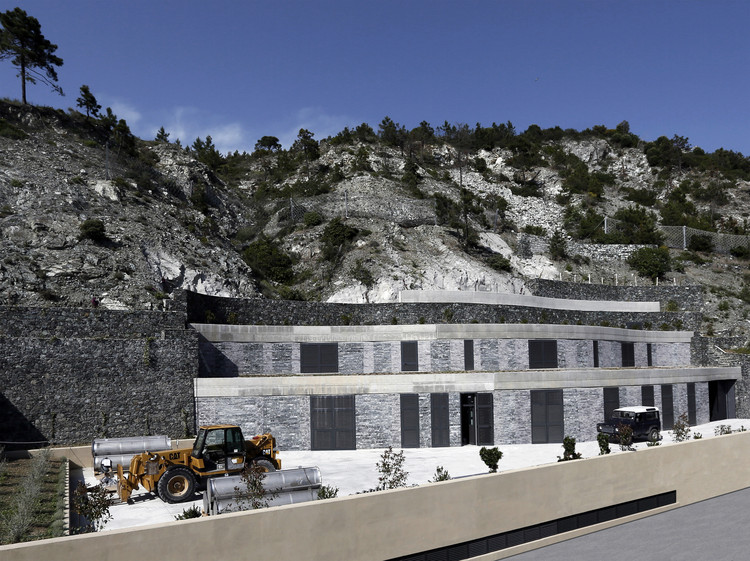
-
Architects: MMAA
- Area: 1340 m²
- Year: 2016
-
Photographs:Roberto Buratta, Paolo Manfroni
-
Manufacturers: Saint-Gobain, Queirolo Roberto, Rosso Levanto, Sideridraulic

Text description provided by the architects. The plant is situated on the Ligurian sea (in the eastern section of Liguria) in a highly important touristic and environmental area: the “Cinque Terre”.

This project embraces both architecture and landscape to create a water treatment plant for Levanto and Bonassola that operates on multiple levels and meets numerous needs.

On the one hand, there is the technical plant with a clear, standardized and regulated function (i.e. water treatment), but on the other, there is the careful consideration of the impact on the landscape of a unit large enough to incorporate all the required high performance, cutting-edge treatment equipment.

The shift from being merely a functional plant to a high quality, meaningful architectural element is far from automatic. Indeed, it is the design that has to take "control" of the landscape by merging the different needs and requirements to produce such quality architecture.

The location of this water treatment plant is relatively unique, with the side of a hill sloping down to the beach, the sea below and the former railway tracks (the line was moved) that have been converted into a seafront walk, lined with amenities and shops, to form a genuine gateway to the fabled tourist lands of Cinque Terre. It is a striking backdrop against which to build a water treatment plant that spans four floors (two underground, two aboveground) and houses all of the water treatment equipment and control units. At the very heart of the project lies the simple idea of reproducing, in a contemporary light, the system of terraced plots that is such a defining feature of the Ligurian landscape.

The building nestles on the hill (and is part of a broader scheme to consolidate the slope and reduce the landslide risk) and then moves away from it in a fluid, dynamic volume that unfolds horizontally for the two above-ground floors, reproducing that terraced structure.
Opposite the first level, accessible by a ramp leading to the road, lies a large yard that provides the space needed for the vehicles and mechanical equipment required for maintenance. The upper terrace is covered by Mediterranean shrubs that blend wonderfully with the top section clad with stone with a cleft finish that recalls the classic walling used for terraces in these lands. This adds harmony and helps link the facility to the hill behind.

The middle terrace has greenery that reminds one of a hanging garden, creating a geometrical pattern that contrasts with the sinuous line of the façade. The interaction between the old railway line - now a walkway and powerful element in the landscape - with the terraced architecture of the new water treatment plant creates a clear dynamic perception.

The doors in the front of the building, in different sizes and with horizontal slats, are functional in origin, but help the overall sense of balance and measure. The cladding for the external walls of the two above-ground levels - done using elegant, curved horizontal bands - is a defining trait of this design, helping to produce the complex composition of the façade.

In a certain way, the cladding represents the project, with its concept of contemporaneity and control. The local stone (Rosso Levanto and Verde Levanto) has a natural finish and is laid in a rigorous, detailed pattern of large bands separated by colour, producing a different perception depending on whether pedestrians walk here from east or west.

This building is all about dynamism and elegance, fluidity and measured composition. It is quality architecture and is definitely far more than a simple functional container; it actively contributes to shaping a concept of landscape wedged between transformation and tradition.

















